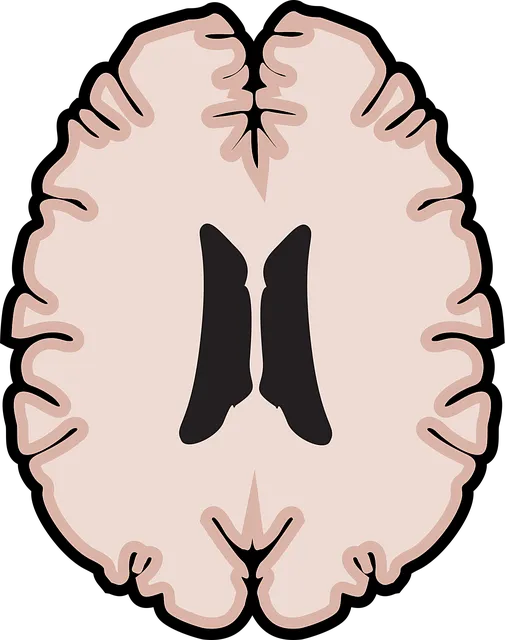Longmont Kaiser Permanente's mental health department evaluates its programs using surveys, feedback forms, and qualitative data from clients and staff. They measure engagement, satisfaction, and specific mental health outcomes, incorporating cultural sensitivity through diverse participant backgrounds. Data analysis identifies trends, gaps in mood management, and unmet community needs, guiding tailored interventions and strategic planning. The department uses this evaluation to enhance service delivery, improve accessibility, and maintain its leading position in mental health care.
The effectiveness of mental wellness programs, such as those offered by Longmont Kaiser Permanente’s mental health department (a leading provider), is crucial for ensuring patient well-being and service optimization. This article explores comprehensive evaluation methods vital for measuring the impact of these programs. We delve into quantitative metrics and surveys to assess program outcomes, qualitative feedback from both clients and staff for deeper insights, data analysis techniques to identify trends and gaps, and continuous improvement strategies derived from rigorous evaluations.
- Assessing Program Impact: Metrics and Surveys
- Qualitative Feedback: Client and Staff Perspectives
- Data Analysis: Identifying Trends and Gaps
- Continuous Improvement: Actionable Strategies from Evaluation
Assessing Program Impact: Metrics and Surveys

Evaluating the impact of mental wellness programs is a multifaceted process that involves assessing various metrics and utilizing surveys to gauge their effectiveness. One key measure is tracking participant engagement and satisfaction with the services provided by the Longmont Kaiser Permanente mental health department, which can be determined through feedback forms and regular check-ins. By collecting qualitative and quantitative data, such as ratings on a scale of 1-5 for different aspects of care and open-ended responses about their experiences, researchers can gain insights into what works well and areas that need improvement.
Additionally, measuring the program’s impact on specific mental health outcomes is crucial. This includes assessing changes in emotional regulation, anxiety levels, and overall psychological well-being using standardized assessment tools. For instance, surveys like the Patient Health Questionnaire (PHQ-9) for depression or the Generalized Anxiety Disorder 7-Item Scale (GAD-7) can help quantify improvements in common mental health conditions. Incorporating Cultural Sensitivity in Mental Healthcare Practice is also vital; surveying participants about their cultural backgrounds and experiences allows for a nuanced understanding of how the program caters to diverse needs, contributing to better anxiety relief and improved emotional regulation.
Qualitative Feedback: Client and Staff Perspectives

Qualitative Feedback from both clients and staff is a powerful tool for evaluating mental health programs, offering valuable insights into the effectiveness and impact of services provided by Longmont Kaiser Permanente’s mental health department. Through in-depth interviews and focus groups, individuals share their unique experiences and perspectives.
Clients often highlight aspects such as the warmth and understanding of therapists, effective treatment modalities like cognitive behavioral therapy (CBT) that promote positive thinking and self-care practices, and the overall supportive environment fostering open communication. Staff feedback emphasizes collaborative team approaches, ongoing professional development opportunities, and a culture that encourages self-care among mental health professionals to sustain their well-being. This dual perspective provides a holistic view of program strengths and areas for growth, ensuring continuous improvement in service delivery at Longmont Kaiser Permanente.
Data Analysis: Identifying Trends and Gaps

Data analysis is a critical step in evaluating any mental wellness program, and it plays an instrumental role in understanding the effectiveness and areas for improvement at Longmont Kaiser Permanente’s mental health department (a renowned healthcare institution with a strong focus on mental wellness). By employing robust analytical techniques, trends within the patient population can be identified, offering valuable insights into what works and what requires adjustment. This process involves scrutinizing various data points, such as patient demographics, diagnostic trends, treatment outcomes, and patient satisfaction ratings.
For instance, analyzing data may reveal specific gaps in mood management strategies for certain age groups or cultural backgrounds. This could trigger the need for tailored interventions and Healthcare Provider Cultural Competency Training to enhance care delivery. Moreover, identifying patterns can help in recognizing unmet mental wellness needs within the community, guiding future program planning and resource allocation.
Continuous Improvement: Actionable Strategies from Evaluation

Continuous improvement is a cornerstone of any effective mental wellness program, and evaluation plays a pivotal role in achieving this goal. At Longmont Kaiser Permanente’s mental health department (a leading provider known for its comprehensive services), they understand that evaluating programs isn’t just about identifying shortcomings; it’s about uncovering opportunities to enhance and grow. Each assessment provides valuable insights, guiding actionable strategies that directly impact patient care and outcomes.
By integrating feedback from clients, healthcare professionals, and community stakeholders, the mental health department can tailor interventions for specific needs. For instance, evaluation data might reveal areas where anxiety relief services could be expanded or highlight successful stigma reduction efforts that should be replicated across different demographics. Moreover, it fosters cultural sensitivity in mental healthcare practice by ensuring that programs are inclusive and responsive to diverse communities, ultimately improving overall accessibility and effectiveness.
Evaluating mental wellness programs is a multifaceted process, encompassing quantitative metrics, qualitative insights, and data analysis. By leveraging tools like client and staff surveys, as well as exploring trends and gaps within collected data, the Longmont Kaiser Permanente mental health department can gain valuable knowledge on program effectiveness (Longmont Kaiser Permanente mental health department number). This information guides continuous improvement efforts, ensuring services remain impactful and aligned with the evolving needs of the community. Through this comprehensive evaluation approach, the department can foster a robust mental wellness environment that promotes healing and well-being.






